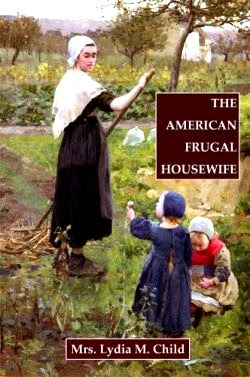Double boilers are a basic pan set. Water goes in the bottom pan and what you are cooking in the upper pan. This allows a more gentle cooking and helps keep puddings etc from scorching. You do have to keep water in the bottom pan and not have it touch the upper pan.
There are not as many on the market as it is not as common as it used to be. I use my enamel one that I got for a shower gift many years ago. My daughter requested one for Christmas last year and I bought her the Faberware Classic double boiler, the same one that Sue has in her kitchen.
Be sure it is heavy enough to keep the water at a simmer and still heat the upper pan.
Be sure it is heavy enough to keep the water at a simmer and still heat the upper pan.
If you do not have one a bowl set in a pan not touching the water works also. Really the set is worth the purchase price as you can use the pans for other cooking. I use mine so much that I really would have to keep it over other pans.
Scrambled eggs, melting chocolate, any pudding or pie filling benefits from this type of cooking. You can set it off of the heat and the water will keep it warm. I always melt chocolate for dipping candy this way.
Below are some recipes using a double boiler.
Old Fashioned Cooked Dressing
Aunt Helen's Peanut Clusters

















I had the Farberware 3-qt saucepan & my Mom bought me both the double boiler insert & the steamer insert [perforated] for Christmas 1 year - many moons ago. Have used both often since & it's great because they all stack together. Farberware also has a steamer insert [with swinging handle] that fits their 6-qt stockpot. Especially great for steaming larger quantities of veggies.
ReplyDeleteI don't believe the set I bought my daughter has a steamer insert, I will have to ask her. That would be really nice, I use a steamer insert a lot.
DeleteIsn't it nice when we have pans that have lasted so well for so many years.
I don't have a double boiler but like to use a bowl set over a saucepan of simmering water to gently cook delicate dishes like custard, sago, and blancmange.
ReplyDeleteIt's a quiet, peaceful task that can't be rushed.
I have a lovely memory of watching my favourite aunt stirring a sago-pudding occasionally while placidly attending to other foods she was preparing for an unexpected but welcomed houseful of guests for a meal.
[Valerie, NZ]
Sago is similar to what we use as cornstarch to thicken a pudding I think? I use a bowl over water in a saucepan when I have a small amount also. Works well I think.
DeleteSago is from a type of palm tree, and comes processed into the form of small "pearls" like a small version of Tapioca. (Wikipedia explains more)
DeleteIt's a very bland starchy food and therefore makes nice subtly-flavoured puddings, children's simple desserts, and "invalid food."
I make a pudding of sago cooked in milk and flavoured with a little sugar, a little cocoa and vanilla, then chilled once it's thick.
[Valerie]
OK, thanks for the information. I should have looked it up. Really closer to what we would call Tapioca pudding than
DeleteSounds good.